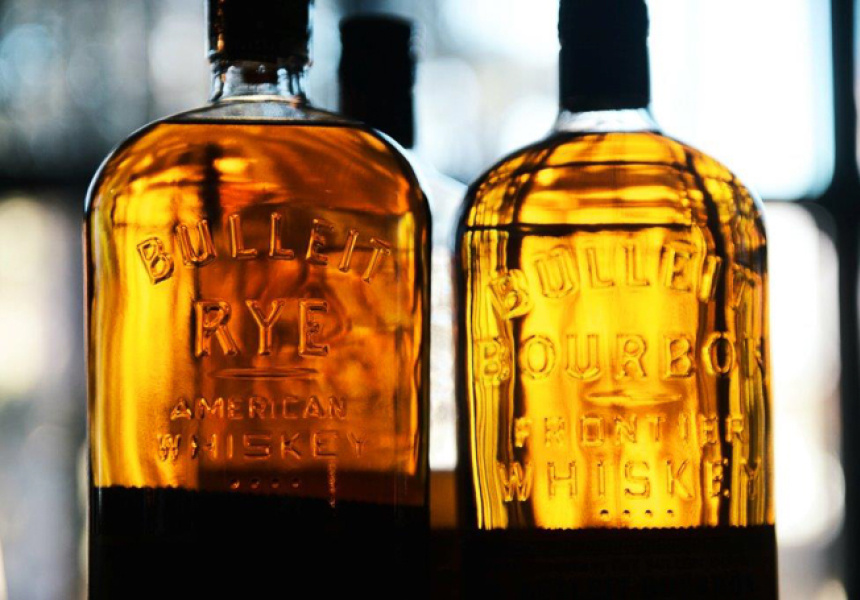Bourbon isn’t optional in Tom Bulleit’s hometown. Together, he and his father would drink bourbon and water, with sometimes maybe a little ice. His mother drank her bourbon in a highball. And Aunt Clara, a Catholic nun, took her bourbon neat (“she gave herself a dispensation,” Bulleit explains).
Bourbon’s ubiquity isn’t so surprising given that Bardstown, Kentucky is the bourbon capital of the world. In Bardstown, claims Tom, every family has its own recipe for the American spirit. “We grew up in the bourbon community,” he explains. “It’s what our relatives did, it’s what our friends did. I’ve always had an interest in bourbon. It was just part of our lives.”
So what’s unusual isn’t that Tom ended up in the bourbon game, but that he managed to avoid it so long. “I hate to throw myself under the bus, but I’m a lawyer and I apologise for that,” he admits sheepishly. “You cannot give it back…I’ve attempted.”
Never miss a Sydney moment. Make sure you're subscribed to our newsletter today.
SUBSCRIBE NOWTom Bulleit’s family had previously been in the whiskey business. His great-great-grandfather Augustus distilled an unusual variation using two-thirds corn, one-third rye. Augustus sailed down the Ohio River to sell (and drink) his bourbon in New Orleans, until he disappeared sometime around 1860, along with his recipe.
When the young Tom told his own father he was going to be a distiller, his father corrected him: he was joining the army, then training to become a lawyer. So he did as his father ordered and served in Vietnam as a Colonel in the US Marine Corp, graduated from the University of Louisiana and had a successful career in law. But in 1987, he decided it was finally time to resurrect the family business, Bulleit Bourbon. “This particular recipe wasn’t made for a long time,” he says. “It was passed down by word of mouth and really it just became a recipe we talked about.”
Bulleit recognised that despite the popularity of bourbon, no other distillers were doing it Augustus’s way: two-thirds corn, one-third rye. “No one had made a really high rye bourbon,” explains Tom. “Our bourbon is 68 per cent corn, four per cent malted barley, 28 per cent rye – that’s double the rye component of other bourbon.”
Pioneers of this style of bourbon, the Bulleit mixture makes theirs dryer than most other bourbons on the market. Maker’s Mark, for instance, uses 70 per cent corn and 30 per cent winter wheat, making it much sweeter.
Exploring new frontiers, Bulleit’s distilling technique is also markedly different from other Kentucky producers. Instead of using the entire contents of the still, the Master Distiller extracts all the phenol alcohol, leaving only the ethyl. For those of us without a chemistry degree, phenol is what gives booze that ‘hot’ feeling in the back of the throat, so while Bulleit Bourbon whiskey is a higher proof than other bourbons, it doesn’t display the same warmth in your mouth.
And unlike other bourbons, Bulleit is aged in charred oak barrels for at least six years and as long as 10. Tom points out that Augustus wouldn’t have aged his bourbon anywhere near as long - letting it mature for about as long as it took to sail from Louisville to New Orleans. “He would have aged the whiskey pretty much by the mile, rather than the year,” he says. “When he got there, they’d drink it, then he’d go back and get some more.”
While Tom is undoubtedly proud of the recipe’s long family heritage, he’s not backward about whose whiskey is better: “I think there’s no question that our whiskeys are much better than they were 150 years ago,” he says. “The bourbon I brought back in the mid-80s is really quite different, dramatically different, than the frontier whiskey Augustus would have made. We have a grain division and we have grains grown to spec. We use a consistent water supply, we don’t move around. We use consistent types of barrels with the same char, number four char, every time. The warehousing, the storage – everything is better than 150 years ago.”
Although international drinks brand Diageo purchased the company in 1997, Tom and his team at Kentucky still control the techniques and the taste of Bulleit Bourbon. The partnership allowed the distillery to extend its distribution (to here in Australia, for example) and double its production to about 300,000 cases a year. It has also allowed him to introduce new products, like a rye whiskey, and a single-malt bourbon aged for 10 years – as long bourbon’s archrival, Scotch.
While the company’s grown as part of Diageo, Tom insists his whiskey is still emphatically small batch. “As a matter-of-fact, they’re agricultural. There’s absolutely nothing in them, no chemistry that goes into them that’s not natural,” Tom explains. “Bulleit comes out of the barrel and is reduced to the bottling proof with the same water we make the whiskey with and it’s bottled. There’s nothing in between.”
Broadsheet and Bulleit Bourbon have partnered to explore the underground culture of American BBQ together over the next few months.


